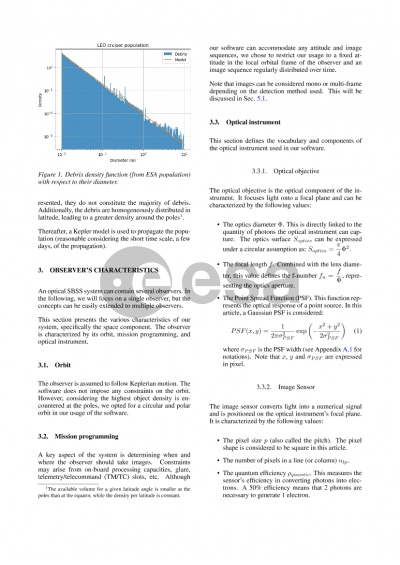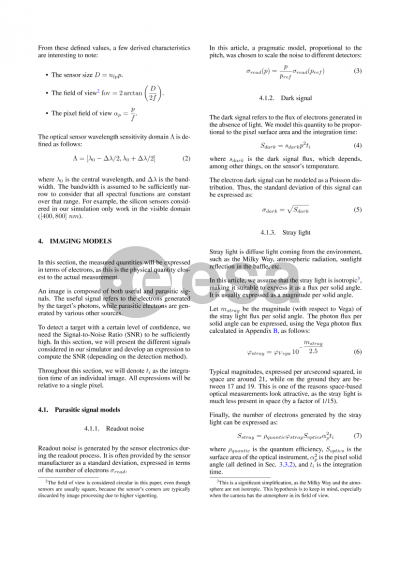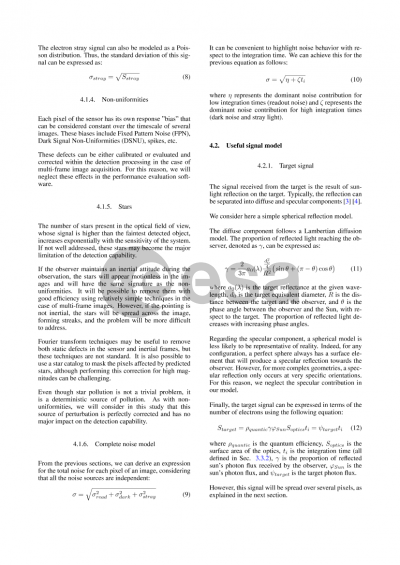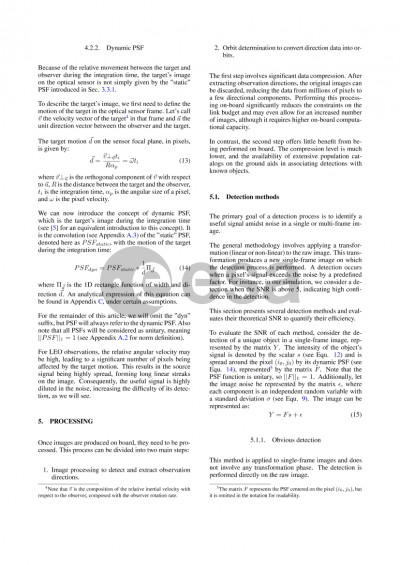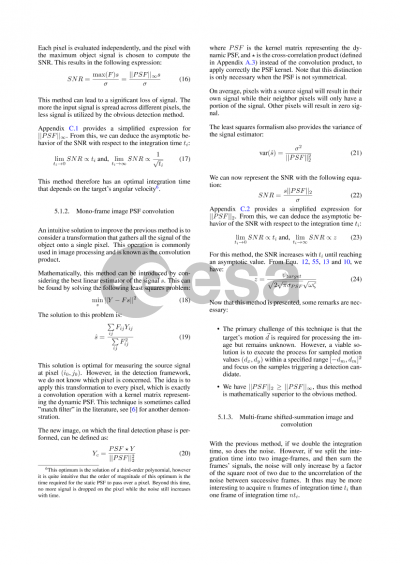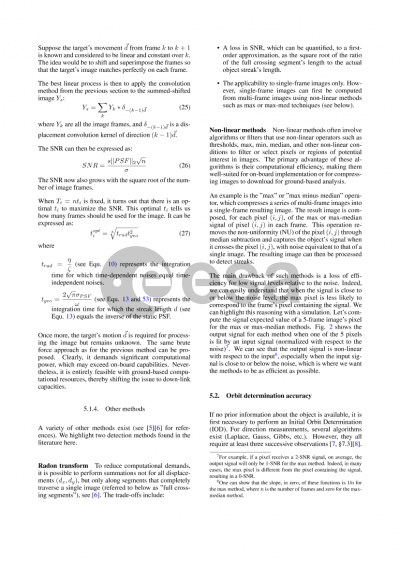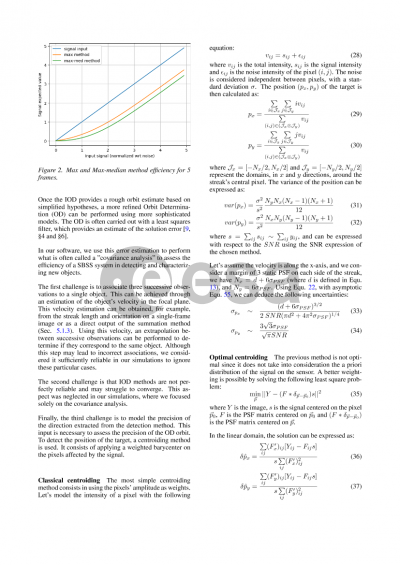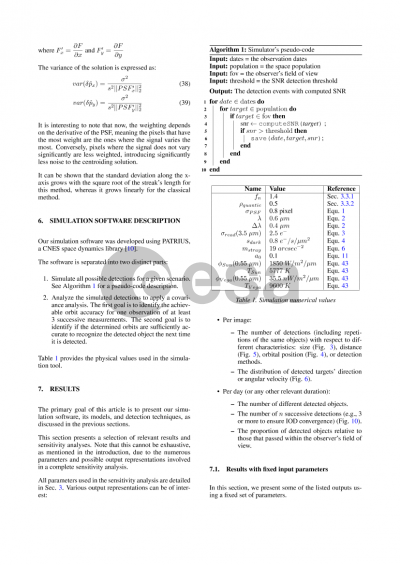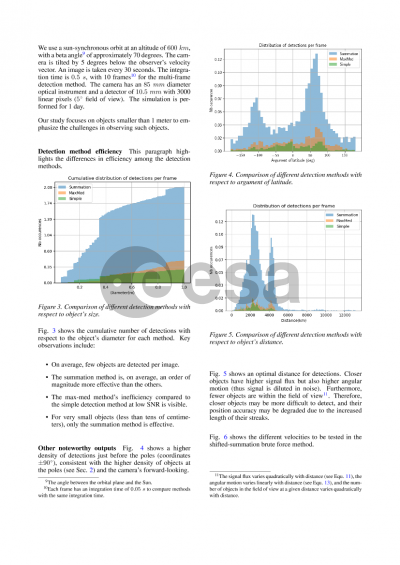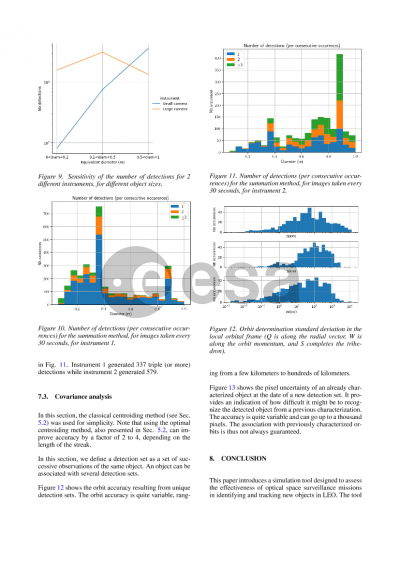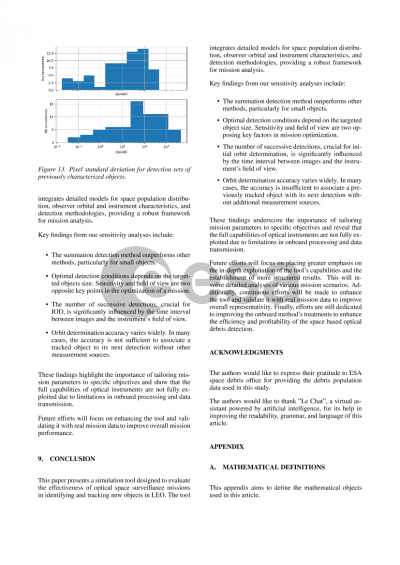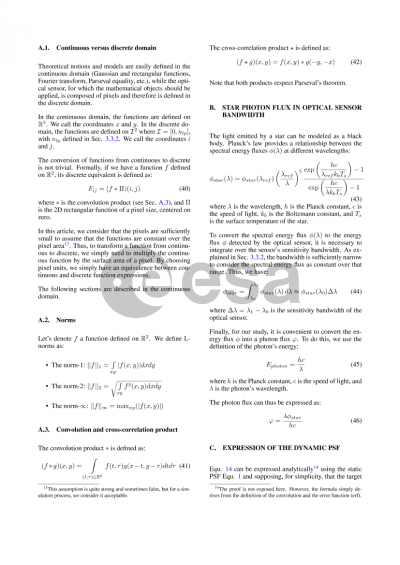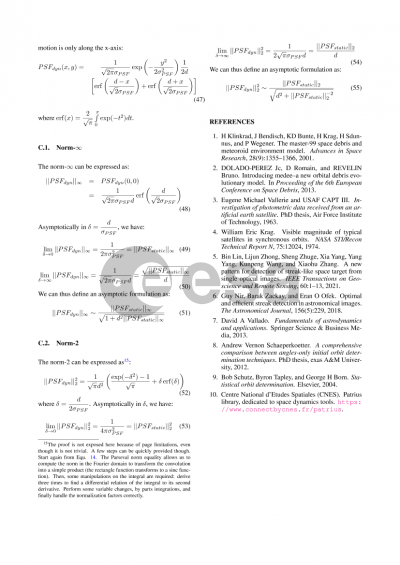Document details
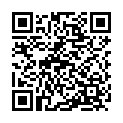
Abstract
This paper investigates the potential of a space-based optical instrument in LEO to track known objects and to detect new ones. A space environment is simulated with a space population of objects, with sizes as small as 1cm. Different configurations of instrument (optics, camera including an accurate noise model), observer orbit and pointing direction, imaging strategy (integration times, captures rate…) have been studied to extract system level order of magnitudes such as the number of detections sorted by size of object, the number of different detected objects, the number of consecutive detection of the same objects allowing immediate IOD… Two different image-processing strategies are compared. The first one, considered as the simplest strategy, consists in a simple SNR threshold on single pixels, intrinsically limited by the low integration time given by the pixel field of view divided by the (high) angular rate of the object. The second one, still not published and with a heavy on-board computational cost, based on image summations, considered as the most sophisticated strategy. This paper shows that the image processing is essential to the efficiency of the mission.
Preview

